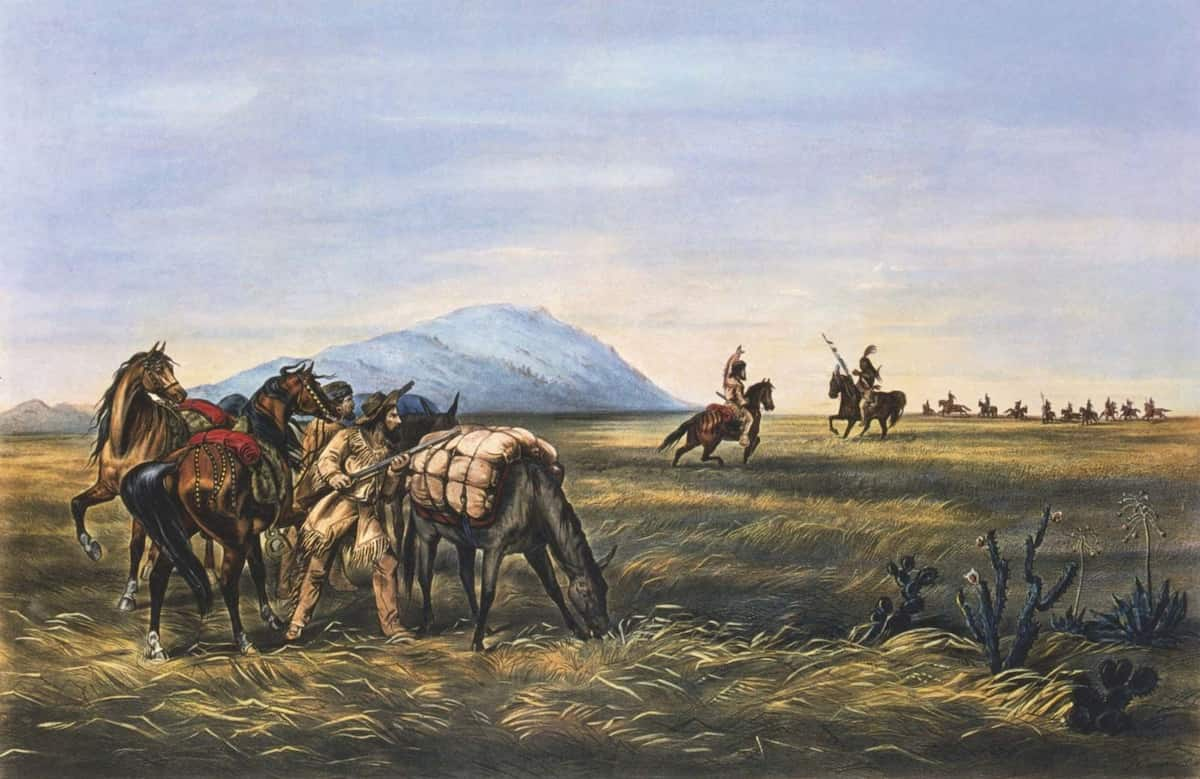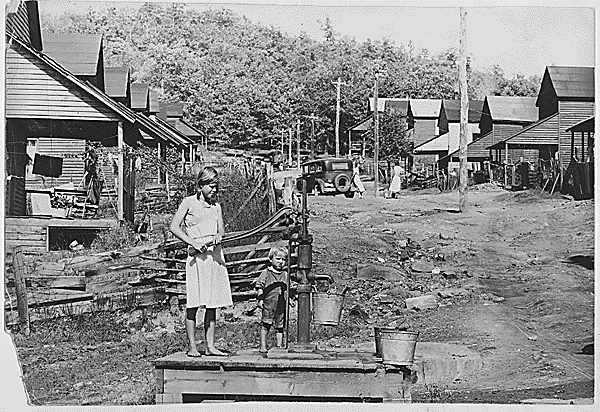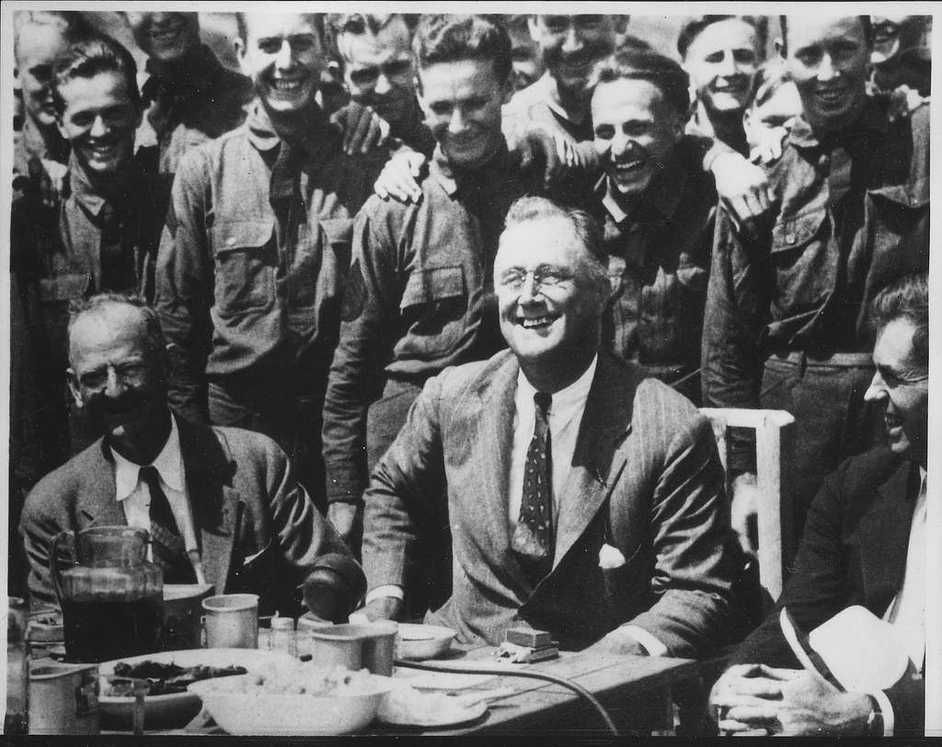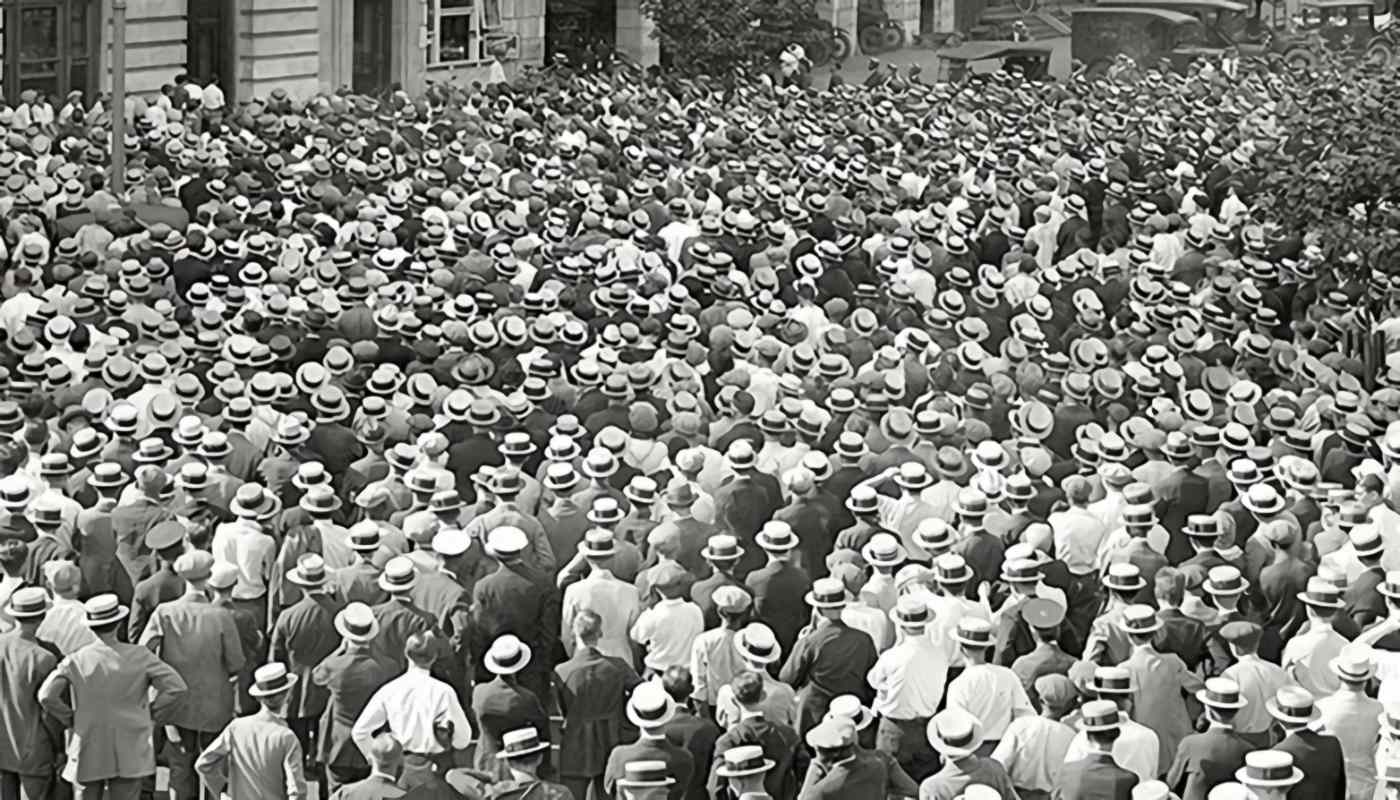After the purchase of Louisiana from France, the conquest of the West began in the early 19th century under Thomas Jefferson’s presidency. Following the Lewis and Clark expedition of 1804, it aimed to colonize the territories beyond the Mississippi River. This historical period in the United States also marks the beginning of the Indian Wars and the deportation of native peoples, starting in the 1830s after the adoption of the Indian Removal Act. The conquest of the West is also known for its numerous migratory movements, notably the gold rush and the race for land. The latter is the subject of a specific law: the Homestead Acts. Gradually, American settlers established themselves in the western states. The conquest of the West ended around 1890, by which time the United States had become a major industrial power on a global scale.
When and How Did the West’s Conquest Begin?
The conquest of the West occurred during a period of profound transformation for the United States. In addition to land purchases in Louisiana in 1803, the Lewis and Clark expedition of 1804 was one of the first notable explorations of the territories west of the Mississippi. Long before the gold rush of 1848, many explorers and adventurers ventured into the fur trade in these wild regions. Between 1846 and 1848, the United States acquired California and Oregon on the west coast. The American government then justified the colonization process with the concept of “manifest destiny,” the divine will to “civilize” the western territories.
Which Territories Are Considered the American West?
The American West is a general term that has evolved over the years according to historical events, conflicts, and political decisions. Notable acquisitions include Louisiana in 1803, Texas’ independence in 1845, and the war with Mexico in 1846. All states west of the Mississippi River are considered part of the American West, including the West Coast territories and the Louisiana territory ceded by France. These include California, and Oregon, the territories of Washington, New Mexico, and Utah.
Who Were the Protagonists of the Conquest of the West?
Throughout the 19th century, the conquest of the West involved many protagonists. The United States gradually colonized the territories of Native American peoples and various European immigrants. This westward expansion also involved certain religious groups seeking to escape persecution, such as the Mormons. During the gold rush, migratory flows were significant, including those from Asia. Many Chinese attempted the journey to seek fortune, participating in commercial activities dedicated to pioneers and gold prospectors. Slaves also likely participated in this event, as slavery was definitively abolished in the United States in 1865 after the Civil War (1861-1865).
How Did Native Americans Experience the Conquest of the West?
The conquest of the West led to numerous conflicts between Native Americans and the United States. The appropriation of territories, buffalo hunting, and massacres of local populations heightened tensions. This period saw numerous confrontations, including the Seminole Wars, Black Hawk War, Navajo War, and Apache Wars. Many Native Americans tried to resist the conquest of their territories, such as Black Hawk, Sitting Bull, Crazy Horse, and Geronimo. From the 1820s, the federal government addressed the “Indian question,” including creating the Bureau of Indian Affairs. In 1837, the implementation of the Indian Removal Act led to the deportation of Native Americans to “reservations,” often worthless lands where these semi-nomadic peoples were forced to stay confined. Under President Andrew Jackson, this forced migration became known as the “Trail of Tears,” causing thousands of deaths.
How Did Settlers Live in the American West?
At the end of the 18th century, there were barely more than 100,000 Americans in the western states. By 1840, various migrations contributed to a population explosion, with nearly 7 million inhabitants. The development of the railroad and the establishment of the Pony Express (the postal service of the time) enabled many families to settle. Immigrant populations retained their European roots, particularly in education, religion, and lifestyle. Economic activities flourished, notably cattle ranching. This period also saw the emergence of new criminality. Notable bandits of the time include the Dalton brothers, Jesse James, Butch Cassidy, and Sam Bass.
How Were Lands Distributed During the Conquest of the West?
To avoid conflicts in land distribution, Abraham Lincoln’s government implemented the Homestead Act. Effective May 20, 1862, it allowed any person or family to claim ownership of a plot of up to 160 acres. They had to justify occupying the land for at least five years. While the conquest of the West recalls the gold rush, it also evokes the “land runs” organized by some states to colonize certain territories more quickly. These were real races, where the first to arrive claimed a ready-to-allocate plot.
What Were the Roles of Cowboys During the Conquest of the West?
Cowboys worked on ranches or cattle farms. Frequently, he was a farm boy or an agricultural laborer assigned to subordinate tasks. His main role was to ensure the supply of beef to meet an exponential demand. The collective imagination often associates the cowboy with a symbol of independence and freedom. However, the reality involved a precarious, often dangerous, daily life with low pay.
When and How Did the West End Conquest Take Place?
The conquest of the West ended around 1890 when authorities no longer distinguished borders within the United States. In 1896, pioneers and adventurers turned to the Klondike, opening the episode of the Alaska gold rush. Buffalo Bill, a bison hunter, created the “Buffalo Bill’s Wild West Show” in 1882, continuing to fascinate audiences with cowboy history. Some historians suggest the end of the conquest of the West was rather in the 1910s, with conflicts between Americans and Mexicans.
What Films, Series, or Books Address the Conquest of the West?
In popular culture, countless stories depict the conquest of the West. In cinema and television, the Western genre is very popular. Notable series include “Little House on the Prairie,” “The Wild Wild West,” “Deadwood,” and “Hell on Wheels.” On the big screen, there are numerous iconic Western films such as “How the West Was Won” (1962), “Far Horizons,” “Once Upon a Time in the West,” and “Dances with Wolves.” In literature, notable works include “The Hanging Tree,” “3:10 to Yuma,” and “Little Big Man.”
Key Dates in the Conquest of the West
May 14, 1804: The Departure of the Lewis and Clark Expedition
In 1804, President Thomas Jefferson ordered the Lewis and Clark Expedition with a total budget of $2,500. The mission aimed to explore the territories west of the Mississippi River.
1817: The Seminole War Against the Americans
The Seminole Indians took up arms when Andrew Jackson invaded Florida with his army. This expedition was purportedly in retaliation for the thefts committed by the Seminoles on Georgia plantations and the assistance they provided to runaway slaves. The Seminoles could not compete. In 1819, a Spanish territory, Florida, was transferred to the United States. Early in the 1830s, the Seminoles signed a treaty to relocate west of the Mississippi. However, some revolted, leading to another war.
May 28, 1830: The Indian Removal Act
Under President Andrew Jackson, the United States enacted a law ordering the deportation of all Indian populations east of the Mississippi. Among these were the Cherokees and Seminoles, who categorically refused to part with their lands. However, the new law left them no choice. The following years, the American army gathered tens of thousands of Indians to lead them beyond the river.
October 1838: The Cherokees on the Trail of Tears
The United States forced thousands of Cherokees to abandon their territory east of the Mississippi and relocate to northeastern Oklahoma. On December 29, 1835, a minority of them signed the Treaty of New Echota with the United States, ceding these gold-rich lands to the country for $5 million. When the treaty expired, the American army evacuated the territory. A long and exhausting journey awaited them, and over 4,000 died en route from cold, fatigue, or disease.
December 29, 1845: The Mexican-American War Begins
Sam Houston, President of the Republic of Texas, requested to join the United States. The annexation was thus voted on by the American Congress in December 1845, and Texas became the twenty-eighth state. The United States also wanted to annex Mexican California, which displeased Mexico. Having lost Texas, Mexico declared war on the United States, beginning the Mexican-American War, which ended in 1848.
January 5, 1846: Annexation of Oregon by the United States
On January 5, 1846, the United States Congress voted to stop sharing the lands in the Oregon region with the United Kingdom. The Convention established between the two countries in 1818 had set the border at the 49th parallel from the Lake of the Woods to the Rockies. Thanks to this vote, the United States annexed Oregon. The Oregon Treaty slightly modified the boundary.
February 26, 1846: Birth of Buffalo Bill
Buffalo Bill, born William Frederick Cody, was a legendary figure in the West’s conquest. He fought in the Indian Wars and was also a bison hunter. In 1882, he led a theater troupe and organized shows dedicated to the Wild West. He died on January 10, 1917, at the age of 70.
January 24, 1848: Mexico Cedes California
The signing of the Treaty of Guadalupe Hidalgo marked the end of the Mexican-American War (1846–1848) between Mexicans and Americans. The Mexicans, defeated, had to cede Texas, California, and New Mexico. The United States acquired half of Mexico’s territory.
January 24, 1848: Start of the Gold Rush and the Conquest of the West
The discovery of a gold nugget in a Coloma sawmill triggered the “gold rush.” The rumor of gold at Sutter’s Mill spread quickly, and thousands of American settlers and European newcomers headed to California to become gold miners. Simultaneously, the conquest of the western territories of the United States began, leading to numerous conflicts and wars over the years.
February 2, 1848: Treaty of Guadalupe Hidalgo
On February 2, 1848, the Mexican-American War came to an end with the signing of the Treaty of Guadalupe Hidalgo. Mexico ceded California, Nevada, Utah, and parts of Arizona, Colorado, New Mexico, and Wyoming to the United States. The United States paid $15 million for these territories. Mexico also had to recognize the annexation of the Republic of Texas by the United States and cede lands east of the Rio Grande.
May 29, 1848: Wisconsin Becomes the Thirtieth American State
The Frenchman Jean Nicolet discovered the territory of Wisconsin. On these lands, he founded the colony of Green Bay. Many Europeans from Germany, Scandinavia, and Switzerland then settled in the region. In 1763, Wisconsin became the United Kingdom’s property. After the American Revolution, the United States took possession of the territory managed by the British until 1812. In 1848, Congress accepted Wisconsin’s entry into the Union.
December 1857: Start of the War Between Native Americans and Settlers in Minnesota
Minnesota became the 32nd state of the American Union in February. During the procedures, the 6,500 Santee and Lakota Sioux, nearly a third of the total population, lost the vast majority of their territory to live on a strip of land in the southwest of the state. Tension escalated, and various incidents sparked a war between Native Americans and settlers, which ended in 1862 after a long series of trials.
April 3, 1860: Creation of the Pony Express
William H. Russell, Alexander Majors, and William B. Waddell founded the Pony Express rapid mail delivery service in the 19th century. It relied on the performance of isolated riders instead of stagecoaches, connecting the Atlantic coast of the United States to the Pacific coast (St. Joseph, Missouri, to Sacramento, California) in ten days instead of 26. Due to a lack of profitability, this service ceased ten months after its creation.
December 20, 1860: South Carolina Secedes
Against the abolition of slavery, South Carolina withdrew from the Union and opposed Abraham Lincoln’s government. Along with Alabama, Florida, Georgia, Louisiana, Mississippi, and Texas, they formed the secessionist movement.
February 8, 1861: Formation of the Confederate States of America
The secessionist movement led to the creation of the Confederate States. This involved the promulgation of a new constitution and the appointment of a president: Jefferson Davis. This opposition with the Northern States marked the beginning of the Civil War.
September 18, 1862: The Sioux Lay Down Their Arms
General Sibley defeated the Santee Sioux at Wood Lake. Since summer, the Minnesota Santee Sioux have launched a relentless war against the Americans. Under the command of Chief Little Crow, they perpetrated numerous massacres of soldiers and civilians. In total, several hundred of them, including women and children, perished under Sioux weapons.
November 29, 1864: Sand Creek Massacre
The Colorado Territory militia attacked a village inhabited by the Cheyennes and Arapahos east of the Rockies during the Indian Wars. Over two days, Colonel John Chivington’s forces killed nearly 270 Indians, including men, women, and children. This episode sparked controversy, leading to questions about the policy of exterminating Native Americans.
April 9, 1865: Defeat of the Southerners at Appomattox
After General Robert E. Lee’s defeat at Appomattox, the Southern troops gradually ceased hostilities in May. This marked the restoration of the Union and the abolition of slavery.
March 1, 1867: Nebraska Joins the American Union
After siding with the Northern camp during the Civil War (1861-5), Nebraska became the 37th state to join the Union. Native American tribes such as the Sioux, Cheyennes, and Pawnees originally populated this wild region in the central United States. The Spanish and then the French successively colonized it, exploring and delineating its first borders before ceding it, along with French Louisiana, to the Americans in 1803. Nebraska became a territory in 1854.
November 27, 1868: Custer and the Washita River
American Lieutenant Colonel George Armstrong Custer, leading the 7th Cavalry with 800 men, attacked Black Kettle’s Cheyenne camp of 51 tipis in the Battle of the Washita River (Oklahoma Plains). They killed 123 Indian warriors and civilians, including their chief and his wife. The initial assault concluded in less than 20 minutes, but the fighting persisted for several hours. The exact role of Custer and the actual course of events—was it a massacre?—remain subjects of controversy and discussion among historians and specialists.
November 29, 1872: Start of the Modoc Indian War
Under pressure from settlers, the American army intervened in the Modoc camp. The influx of emigrants to the fertile lands of Oregon and California (late 1840s) prompted the administration to expel the Modoc Indians and regroup them on the neighboring Klamath reservation, which they refused. After seven months of fierce resistance, the “Modoc War” ended with the hanging of its leaders, including their chief Kienptoos, Captain Jack, and the rest of the tribe being “directed” to Oklahoma reserves.
June 27, 1874: Beginnings of the “Red River War”
The second Battle of the Adobe Walls (Texas) marked a new phase in the Indian wars. According to legend, after being attacked by 300 Indian warriors, including Comanches, Kiowas, Cheyennes, and Arapahos, led by Quanah Parker, twenty-eight hunters took refuge in a trading post run by James C. Hanrahan. The American army subsequently intervened, sending five regiments against the rebellious tribes. The American army drove these out of the Southern Plains to the Oklahoma reserves, thereby ending Indian resistance.
June 25, 1876: The Little Bighorn Massacre
The Cheyenne, Sioux, and Arapaho killed a detachment of the 7th Cavalry, led by Lieutenant Colonel George Armstrong Custer, during the Battle of Little Bighorn (Montana). Against 3,500 Indian warriors led by Sitting Bull and Crazy Horse, the general and his 275 soldiers couldn’t hold out for long.
October 1877: Chief Joseph Surrenders
After leading his Nez Perce tribe on a 2,000-kilometer escape route through the Rocky Mountains, Chief Joseph surrendered to the American army in Montana. While his attempt to avoid internment on the Idaho reservation initially succeeded, he eventually fell into the hands of the cavalry of General Nelson Miles. General Nelson Miles imprisoned him in Fort Leavenworth for eight months before transferring him to the Indian Territory.
October 6, 1879: Anglo-American “Pacific War”
The War of the Pacific pitted Chile against Peru and Bolivia. The cause: the Bolivian nitrate tax imposed on the Chilean company “Compañía de Salitres y Ferrocarril de Antofagasta” in Antofagasta (formerly a part of Bolivia). Bolivia’s breach of the free-trade treaty led Chile to occupy the city in February 1879, prompting Bolivia to declare war in March, followed by Peru, honoring its military alliance. The Chileans emerged victorious in 1884, annexing Atacama, Antofagasta, and part of Peru (Tarapacá and Arica).
May 2, 1885: The “Red River War” Ends
Ending on June 6, 1877, the so-called “Red River War” was a series of military campaigns by the United States Army against the Southern Plains Indians (Comanche, Kiowa, Southern Cheyenne, and Arapaho) in Texas. General Philip Sheridan dispatched five regiments against the rebellious tribes, ultimately subduing them to the Oklahoma reserves.
April 22, 1889: Land Rush in Oklahoma
On April 22, 1889, the American government officially opened Oklahoma Territory to settlers through the Land Rush. About 50,000 settlers (“Boomers”) participated, competing to claim the best lands.
December 29, 1890: Wounded Knee Massacre
The last confrontation of the Indian Wars took place in Wounded Knee (South Dakota). The American army attacked a Sioux camp, resulting in the deaths of 153 Indians, including women and children. This massacre marked the definitive end of the Indian resistance and symbolized the conquest of the West.
July 7, 1898: Annexation of Hawaii
In the late 19th century, the Kingdom of Hawaii found itself increasingly under American influence due to the economic importance of its sugar plantations. In 1893, a group of American settlers and businessmen orchestrated a coup against Queen Lili’uokalani, leading to the establishment of a provisional government. Following the coup, the United States initially hesitated to annex Hawaii, but with the outbreak of the Spanish-American War in 1898, the strategic value of the islands became clear. On July 7, 1898, the United States officially annexed Hawaii through the Newlands Resolution, and it became a U.S. territory in 1900. This event marked a significant expansion of American influence in the Pacific.
These events outline the relentless expansion of the United States across the continent, often at the expense of Native American populations, through wars, treaties, and migrations. Violence, displacement, and significant changes in the American landscape and society marked the conquest of the West.











